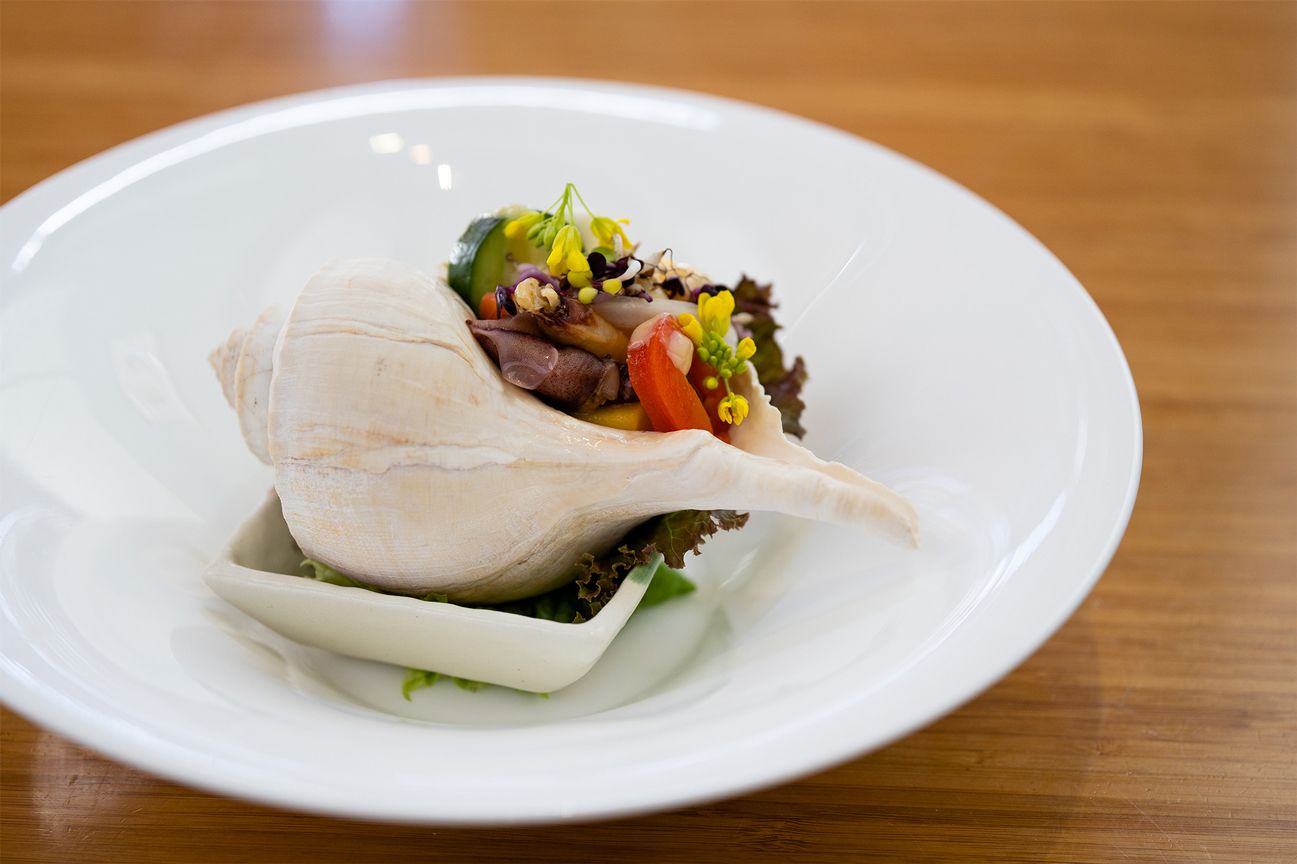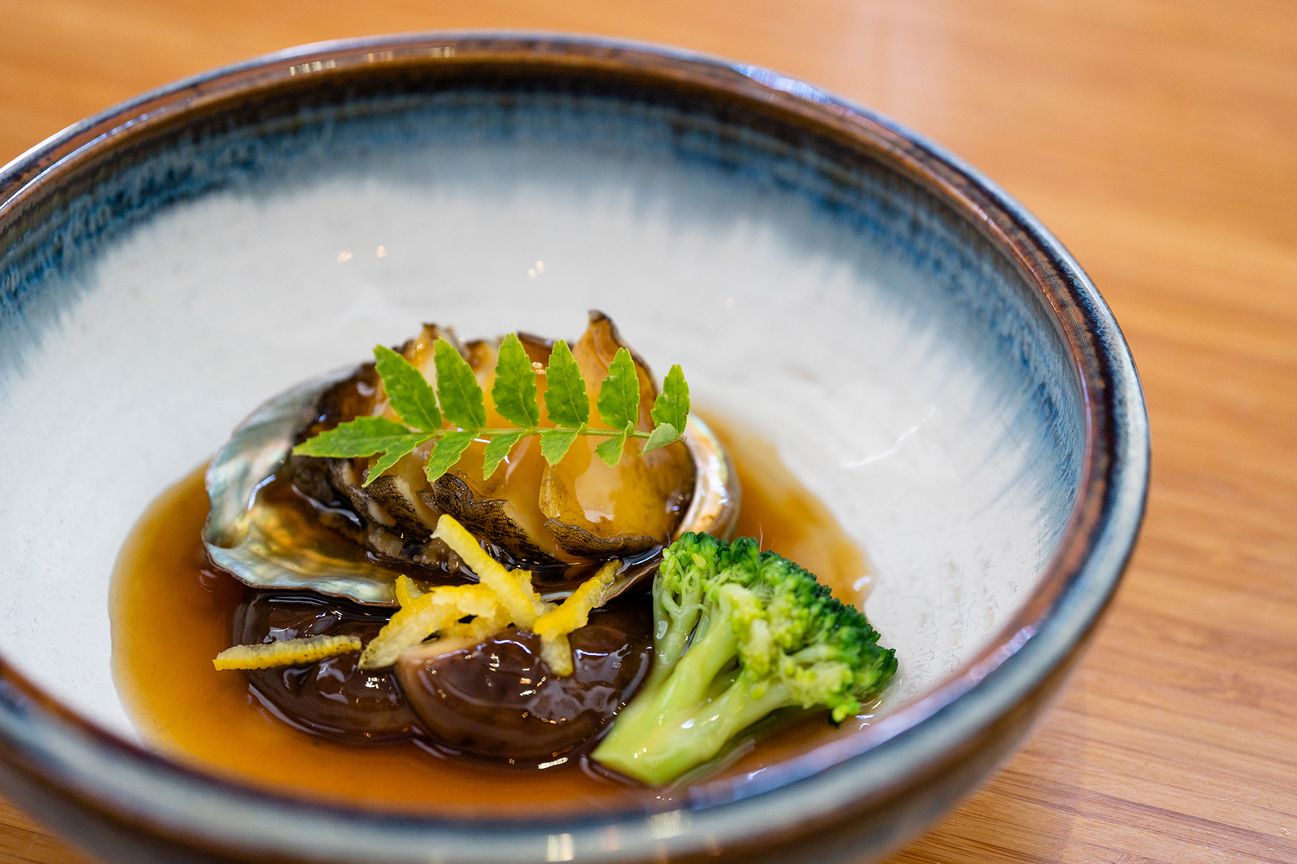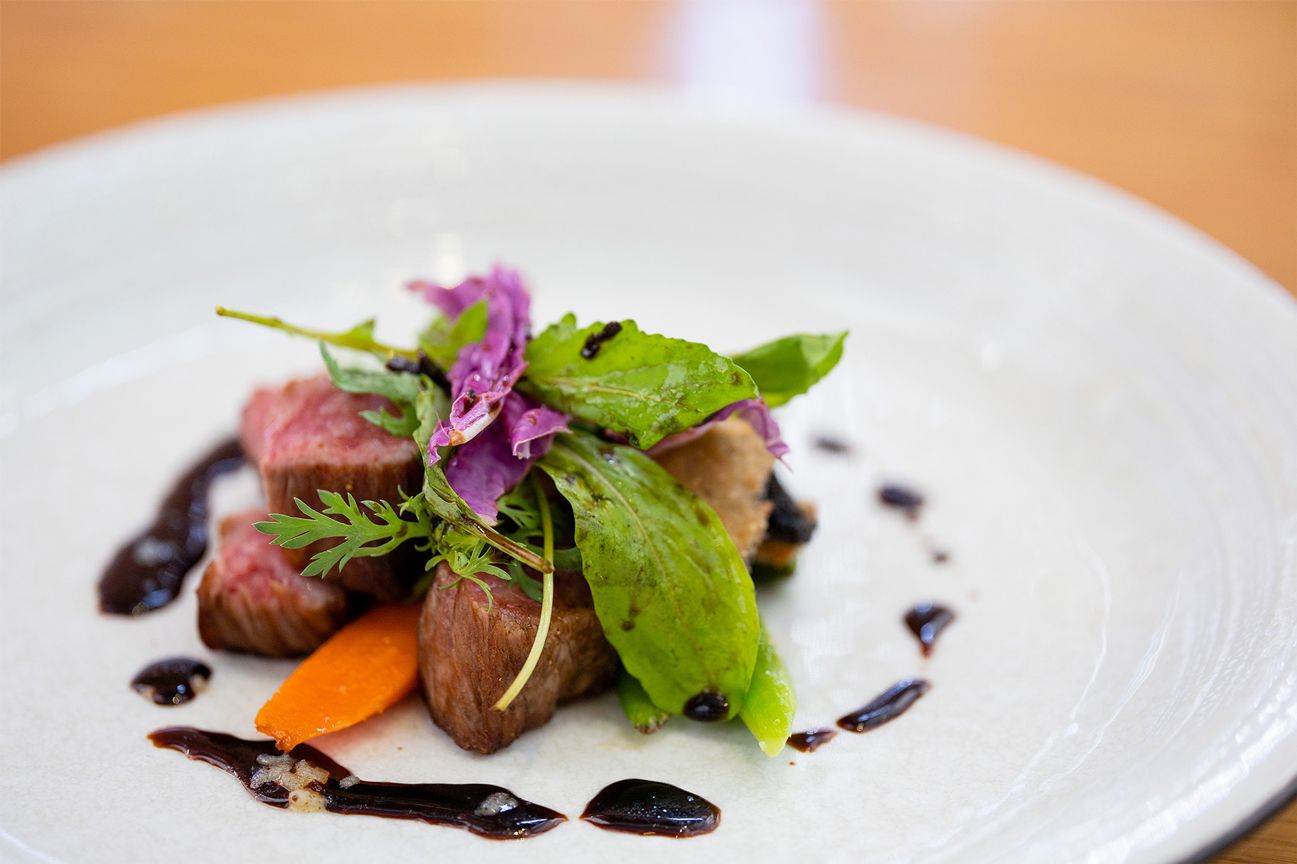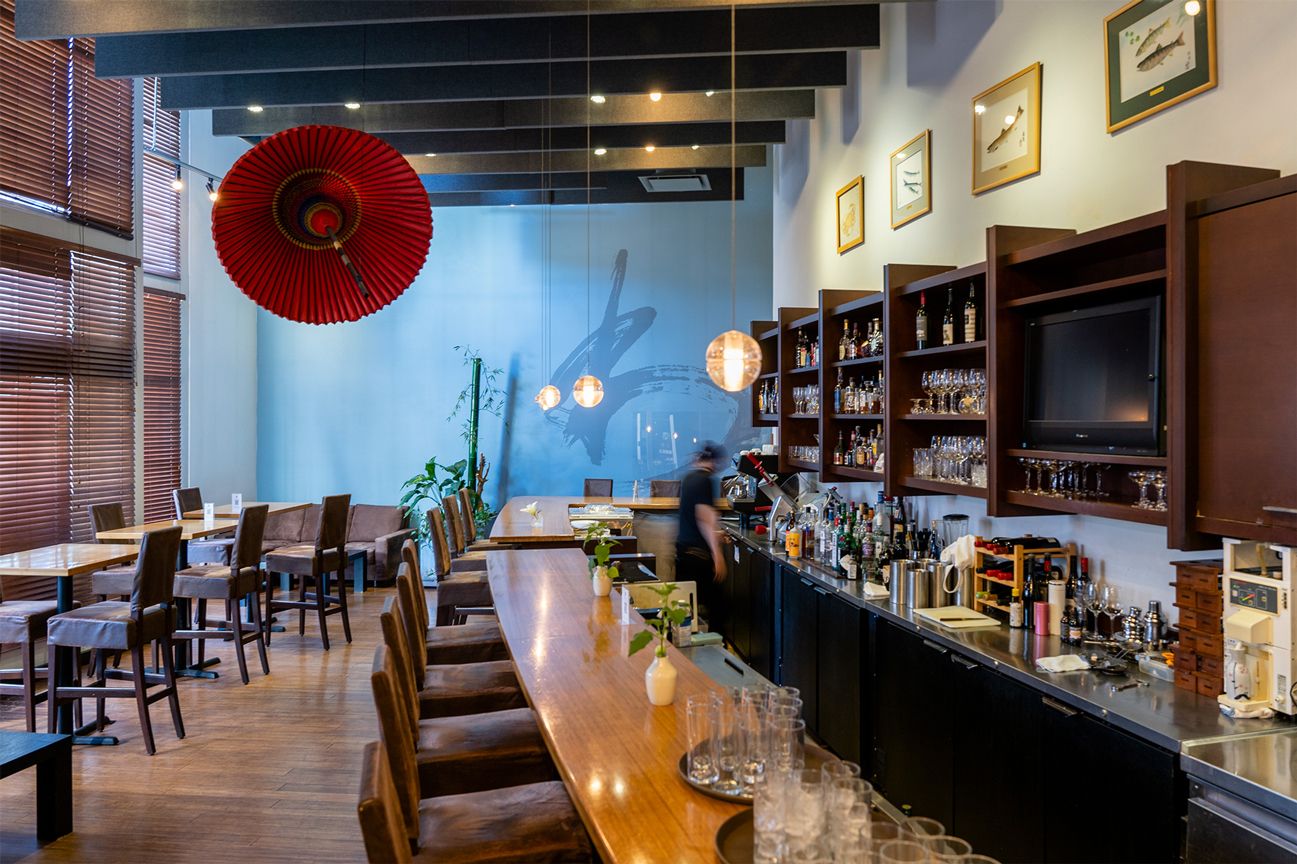
Why the Leader of Vancouver’s Japanese Food Scene Continues to Choose Japan-produced Ingredients
Tojo’s Roll, said to be the precursor to the California roll, was conceived by Vancouver chef Hidekazu Tojo in 1974. At the time, sushi restaurants did not even exist in Vancouver. Today, however, sushi is so prevalent that it is readily available for take-out all across the city. We spoke with Mr. Tojo, who serves as a Japanese Cuisine Goodwill Ambassador, about just how much Japan’s food culture and Japanese ingredients are being put to use in Vancouver’s dining scene.
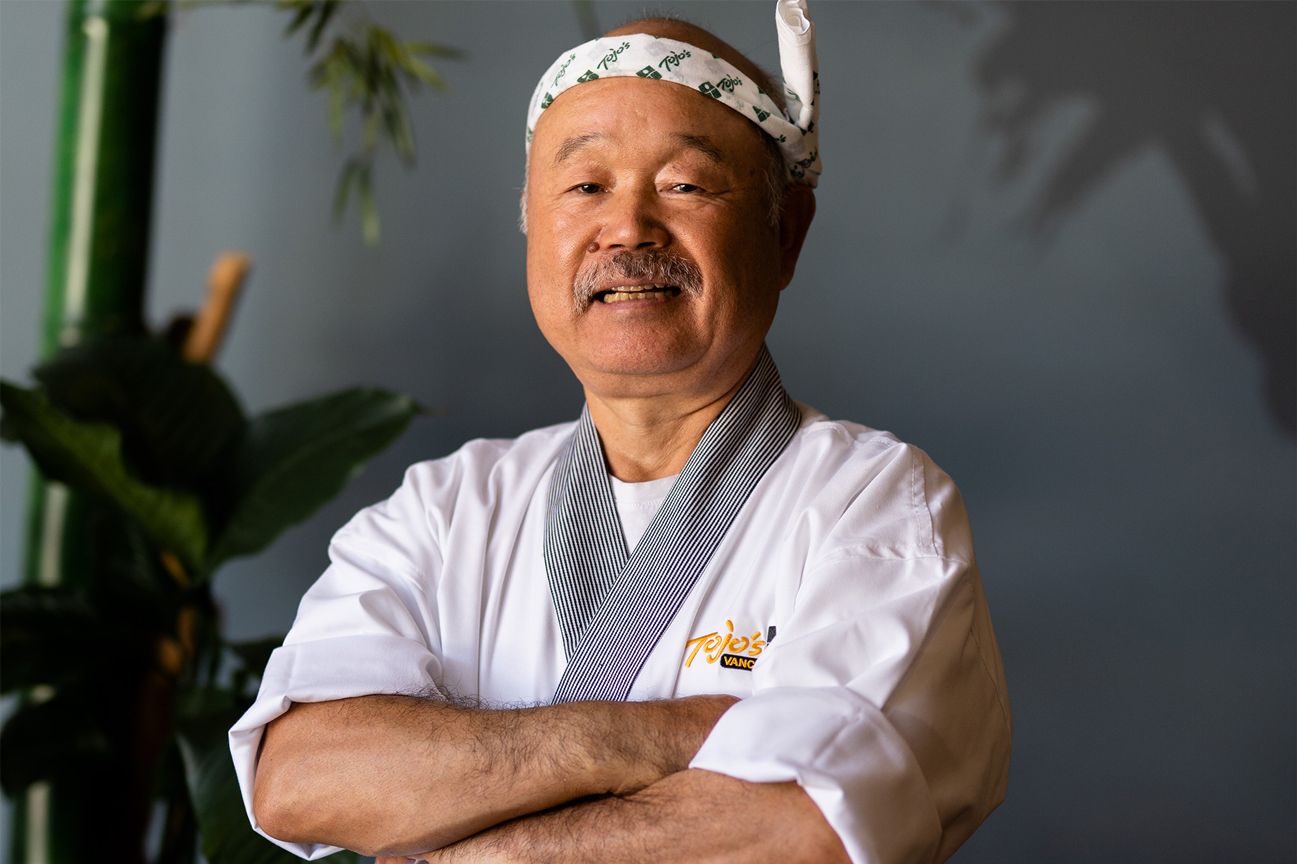
Hidekazu Tojo was appointed Japanese Cuisine Goodwill Ambassador by the Ministry of Agriculture, Forestry and Fisheries in 2016.
Black wagyu beef, a specialty of Hida, the northernmost region of Gifu Prefecture; firefly squid from Toyama Prefecture; scallops and abalone from Miyagi Prefecture; Shinshu miso from Nagano Prefecture; sea urchin and Hidaka kelp from Hokkaido... “And the fish that comes through Toyosu Market is just great quality,” Mr. Tojo adds with passion in his voice as he lays out all of the ingredients he has imported from Japan on the kitchen counter.
“Japanese ingredients have gained an immense level of trust for their quality, so much so that they’ve permeated all kinds of restaurants in Vancouver, from Italian to Thai. Seafood imported from Toyosu Market in particular is more expensive but better prepared with the blood and everything taken out, so it lasts all the longer and tastes all the better. High-end restaurants with especially demanding clientele use Japanese ingredients,” he explains. Mr. Tojo says that ingredients determine 80% of how a dish tastes. He values his ability to carefully select the best ingredients based on the culinary sensibilities he has cultivated over a great many years.
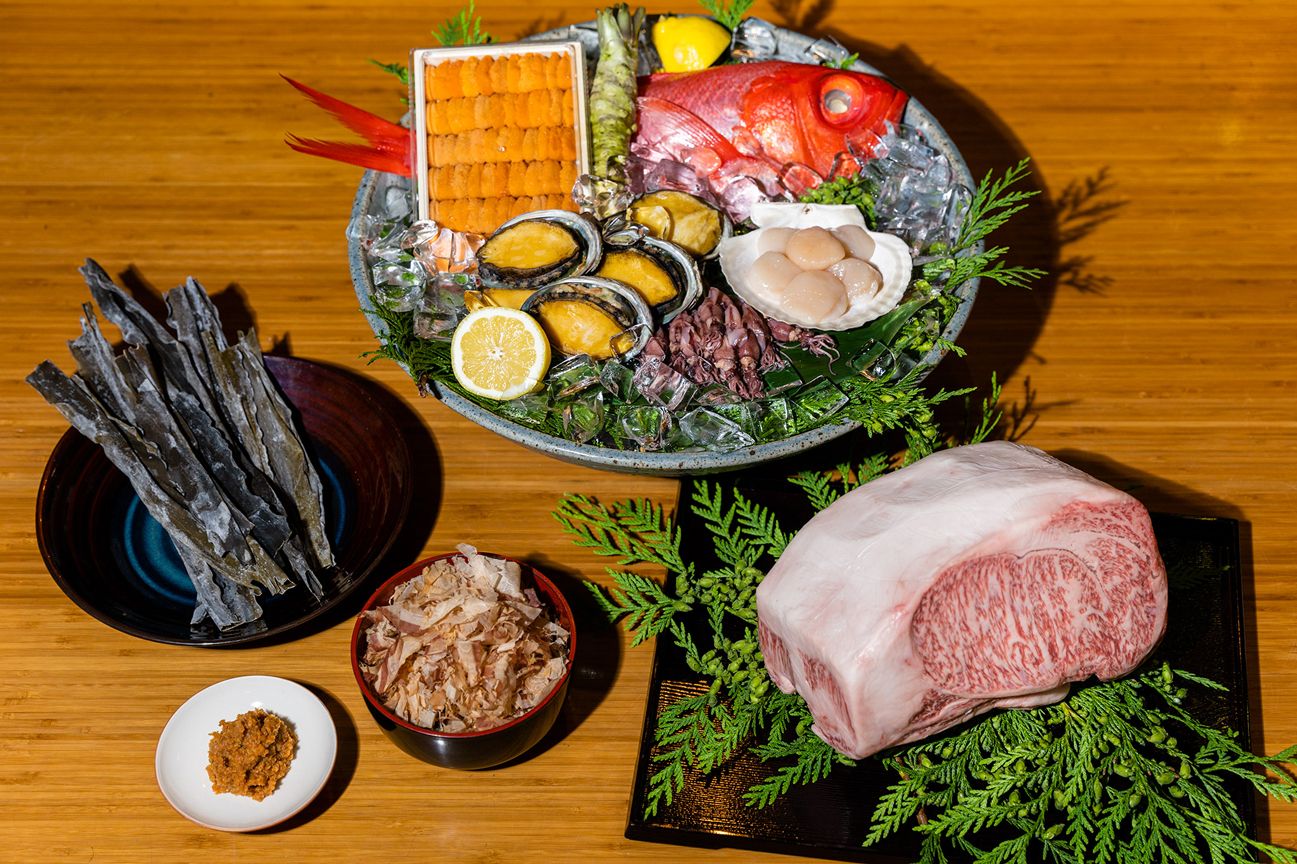
The round plate to the top has a golden eye snapper straight from Toyosu Market, scallops and abalone from Miyagi Prefecture, sea urchins from Hokkaido, and firefly squid from Toyama Prefecture on it. To the bottom right is Hida black wagyu beef. Mr. Tojo also sticks to using Japan-made seasonings, such as Hida kelp, Shinshu miso from Nagano Prefecture, and dried bonito flakes. As a Japanese Cuisine Goodwill Ambassador, he has frequent opportunities to introduce Japanese food products to local restaurants. “They always say that food from Japan is delicious.”
“Quality ingredients taste good even if you just season them with a little bit of salt. The salt, soy sauce, and other seasonings I use are all made in Japan. They complement the flavor of any local ingredients from British Columbia (BC), Canada as well, like the salmon, sablefish, halibut, and Alaskan prawns caught here. Soy sauce goes well with everything from Italian to French, and it’s actually used at a lot of restaurants.”
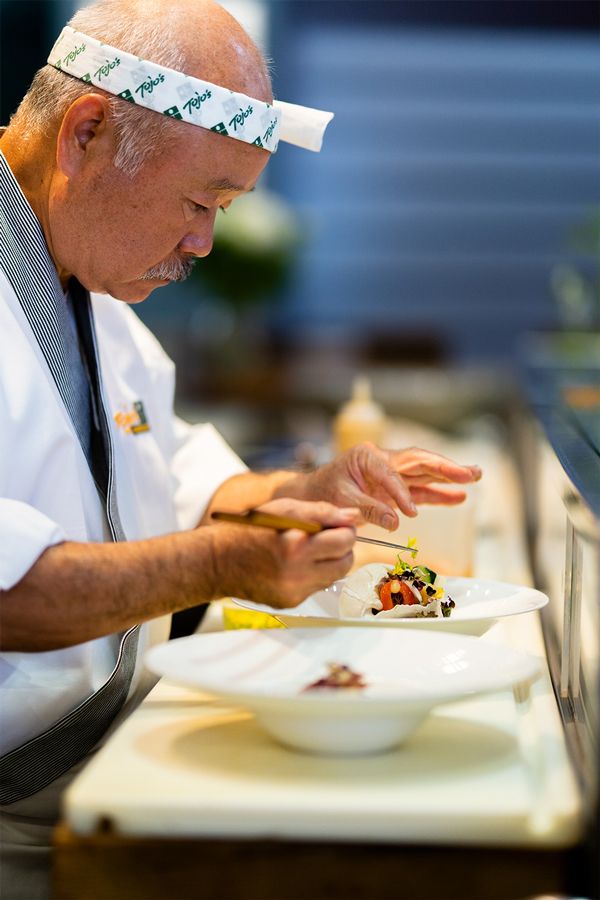
Mr. Tojo with a serious look on his face as he plates a dish delicately.
Mr. Tojo began his career as a chef in 1968 at a high-end traditional Japanese ryotei in Osaka. When he found out that a Canadian restaurant was looking for a young chef in order to open a sushi bar, he decided to train as a sushi chef to make his longtime dream of working abroad come true. He went on to touch foot on Canadian soil for the first time in 1971. There, he gained experience working at the sushi bar and other restaurants around Vancouver before opening the eponymous Tojo’s Restaurant in 1988.
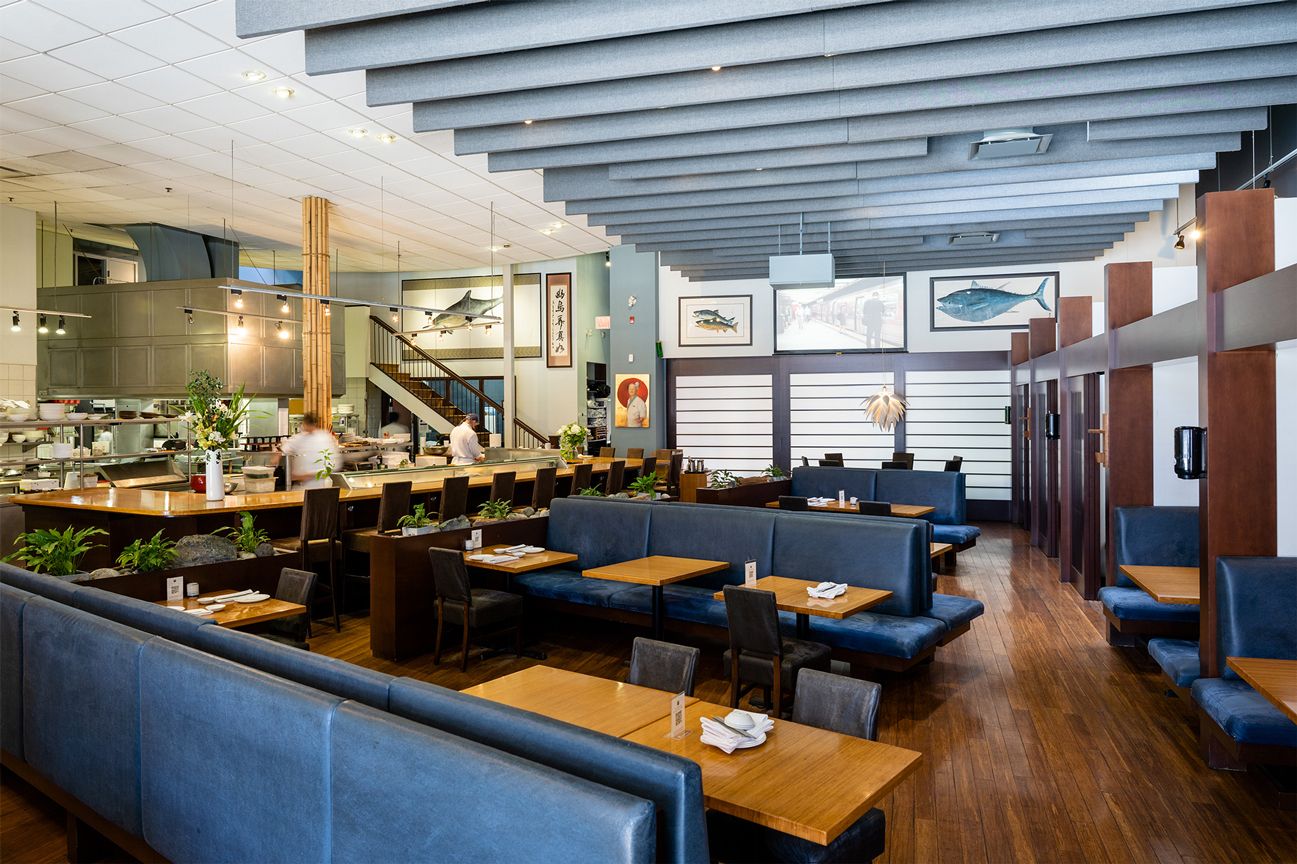
You can see the chefs working briskly from inside the restaurant. The open space with its at-home vibe welcomes food lovers from around Canada and abroad.
Having served Japanese food to the people of Vancouver for decades, Mr. Tojo has some regulars who have been coming to him for as many as 45 years. The secret to keeping them coming back is to “always deliver surprises,” he says. Omakase course meals in particular, which give the chef free reign and make use of an abundance of seasonal ingredients, fully convey how they have been inspired by the ingredients and just how much they have enjoyed working with them.
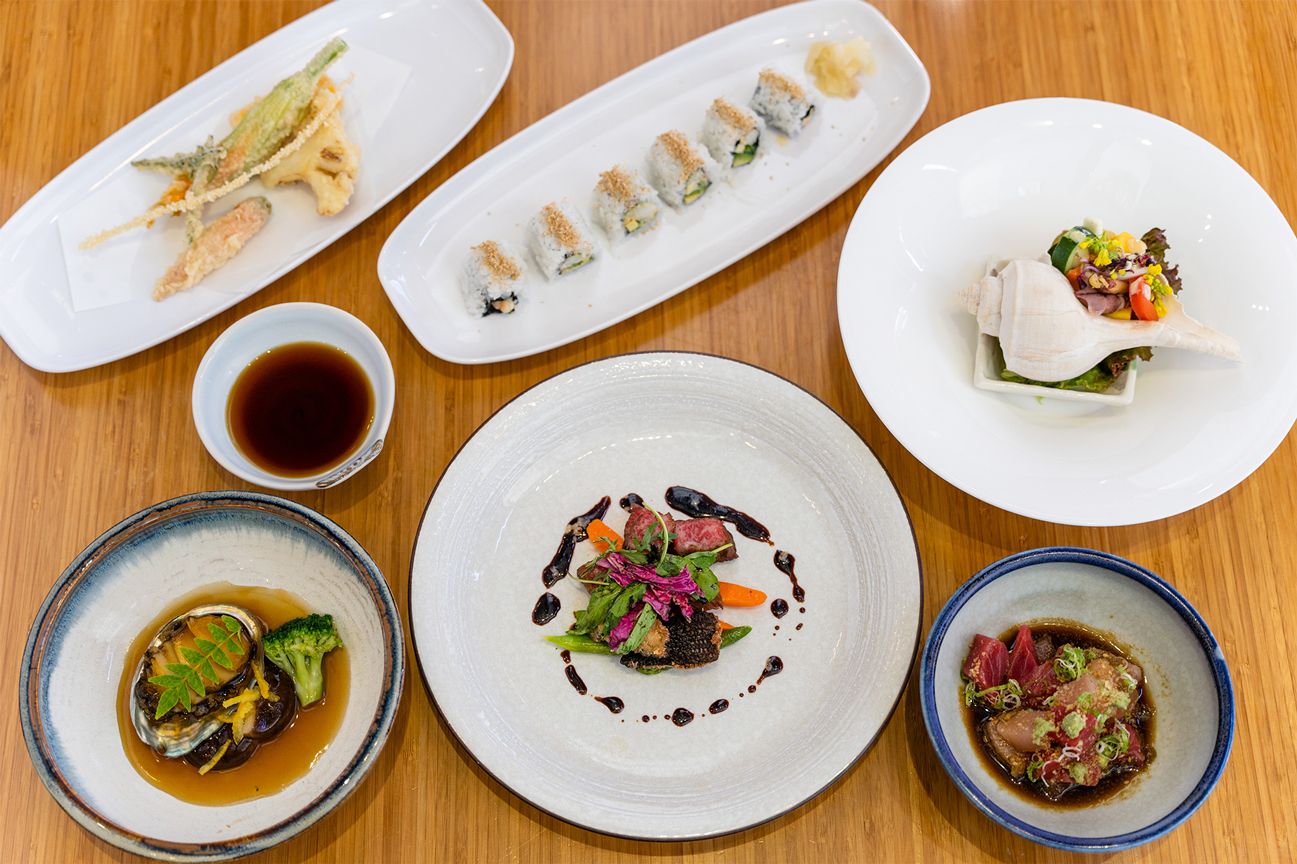
A seasonal omakase course, fresh and packed with surprises. The restaurant offers fusion dishes that combine seasonal Japanese ingredients with local produce.
“Classical kabuki performances always seem the same, but each one is different. The same can be said of cooking. Swapping the bowl, the plate or the sauce will change things up, even with the same ingredients. Dishes can be made hot or cold too, depending on the season. A lot of our regulars stick to their old favorites, but they also enjoy our new menu items. In our job, it’s important to provide an unchanging taste so our customers trust in us, but still impress them so they don’t get tired of things.”
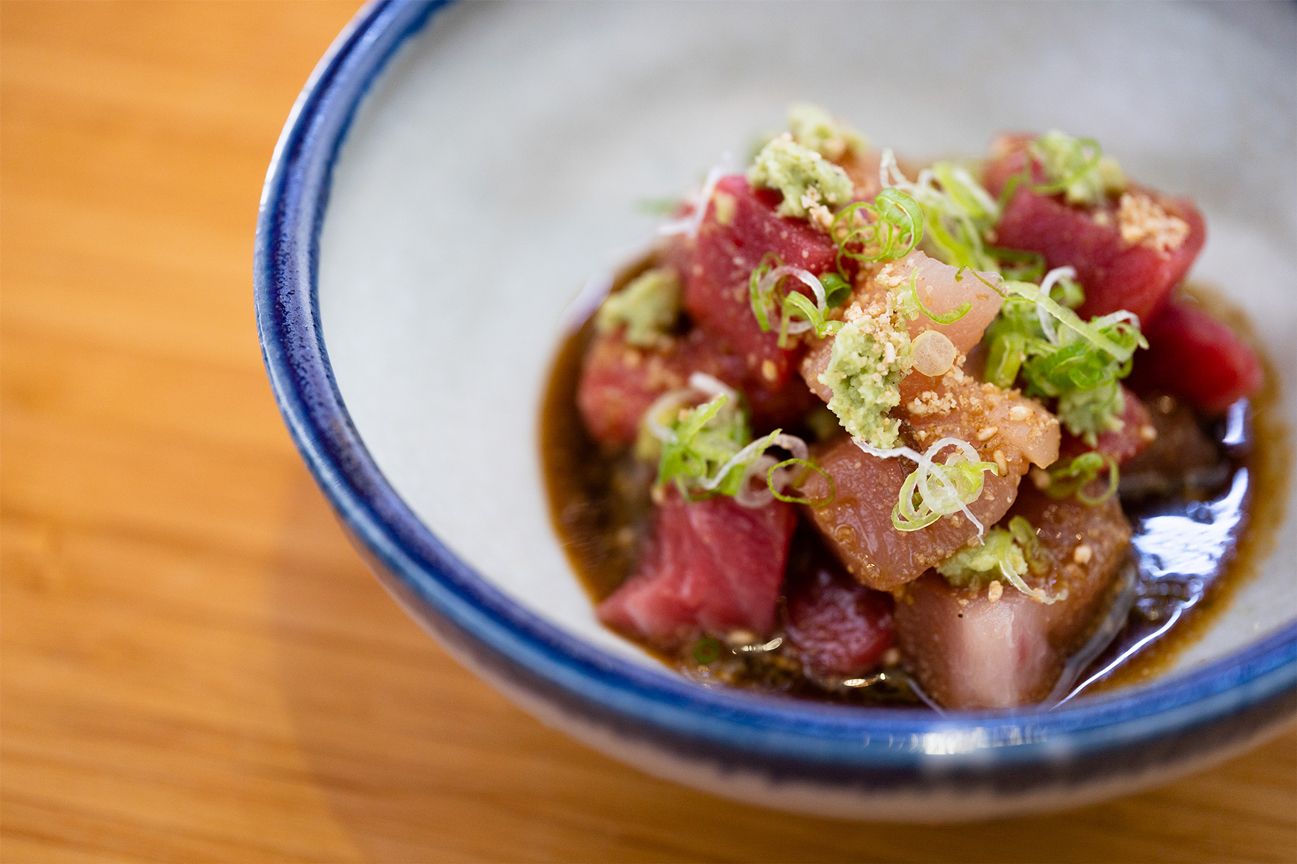
Tojo’s Tuna, one of Mr. Tojo’s signature dishes, is made with both Japanese and Canadian tuna. Combining ingredients from the two countries fusion style is a hallmark of his cooking.
Some of the dishes that Mr. Tojo came up with in the 70s are still on the menu today. Among them are Tojo’s Roll, the original sushi roll with seaweed on the inside that has become a staple in North America, Tojo’s Tuna, consisting of seasoned tuna sashimi, and the BC Roll, made with salmon skin.
“When I thought about how I could keep working as a chef here in Canada, I decided to make dishes that would be welcomed by the locals. As an example, some customers don’t like the look of seaweed, so I hid it inside of the roll. That’s how Tojo’s Roll was born,” Mr. Tojo recalls.
“A lot of locals didn’t eat raw fish back then. Even if they did order sashimi, they didn’t know how to eat it. They’d close their eyes, pinch their nose, and eat it without any soy sauce. So I served tuna marinated in a mix of soy sauce, wasabi, and sesame seeds, and people said it was delicious. That’s how Tojo’s Tuna came to be.

Tojo’s Roll is filled with avocado, egg, and crab. It is still made today, updated to match the preferences of local customers.
Moreover, the BC Roll, which features fragrant barbecued salmon wrapped skin and all, was actually concocted for customers who wanted to eat eel.
“At the time, we could only get our hands on dried goods from Japan. Vacuum seal technology wasn’t around yet, so there was no way to eat eel. That’s when I thought of using salmon skin as an alternative.” It was always when faced with difficulty that new menu items were born. By coming up with fresh dishes that would solve problems and be embraced by locals, Mr. Tojo has continued to move forward and establish a track record of originality.
Omakase-style meals serving sushi, sashimi, and seasonal Japanese ingredients are now a staple of not just Vancouver’s Japanese restaurants, but also fusion-style restaurants popular with the younger generations. Arguably the instigator of this trend, Mr. Tojo and Tojo’s Restaurant continue to evolve to meet the needs of the modern customer as well.

Well-known Hollywood stars, musicians, and other celebrities are counted amongst the frequent customers at Tojo’s Restaurant.
“This business is built on trust. It’s important to make your restaurant one that people won’t visit just once, but rather that they will trust and keep coming back to,” Mr. Tojo says. This famous restaurant, loved not only by locals but people from all over the world, continues to draw customers today looking to enjoy dishes made with Japanese ingredients of the highest quality that meet Mr. Tojo’s demanding taste.

The letter from the Ministry of Agriculture, Forestry and Fisheries appointing Mr. Tojo as Japanese Cuisine Goodwill Ambassador hung inside the restaurant.
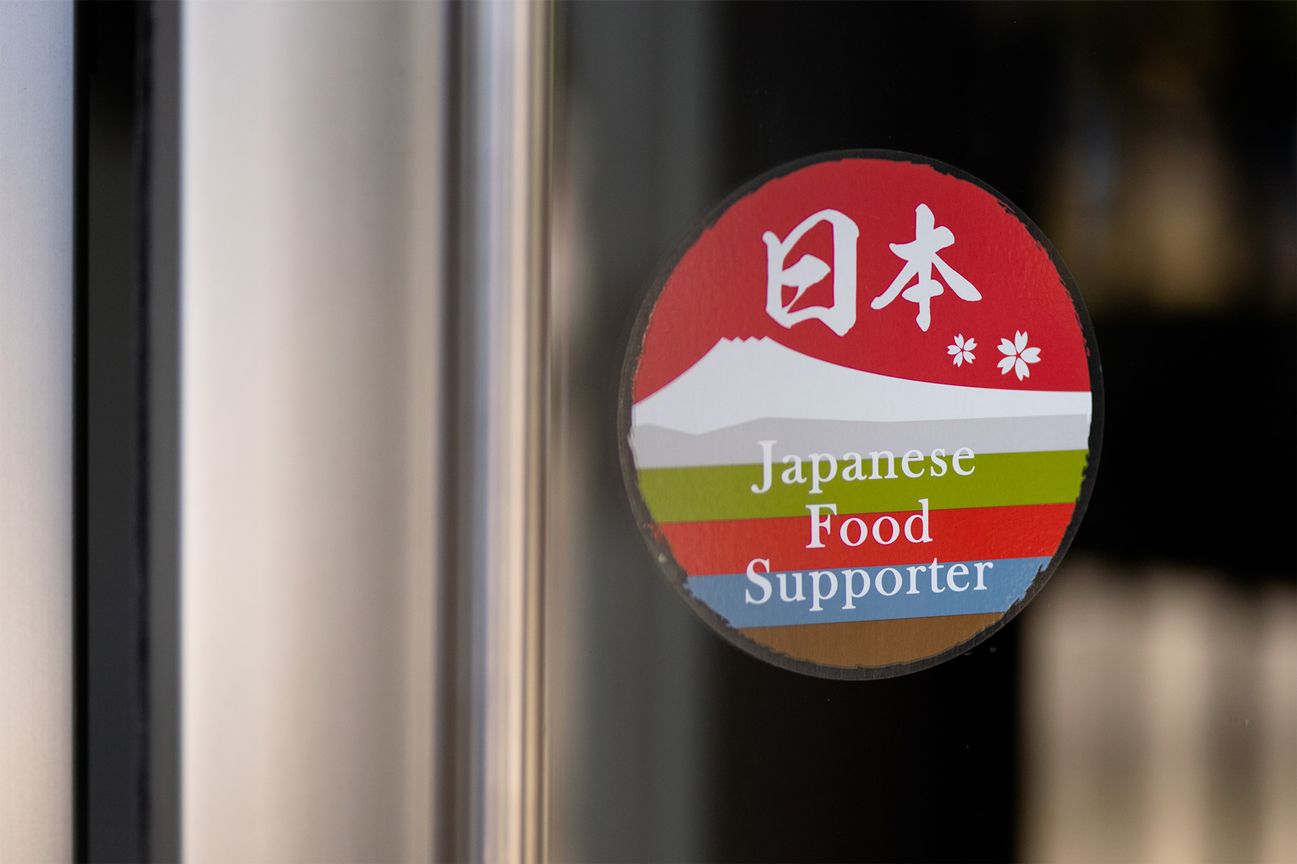
Tojo’s Restaurant is also a certified Japanese Food and Ingredient Supporter Store.
Text: Kozue Sato Photography: Norihisa Hayashi
Tojo’s Restaurant
1133 W Broadway, Vancouver, BC V6H 1G1 CANADA
Tel: 1-604-872-8050
https://tojos.com

